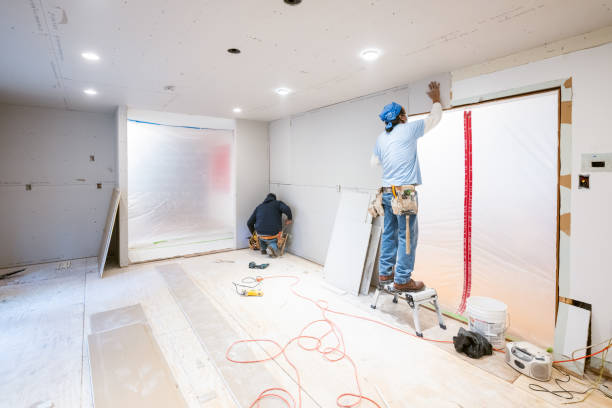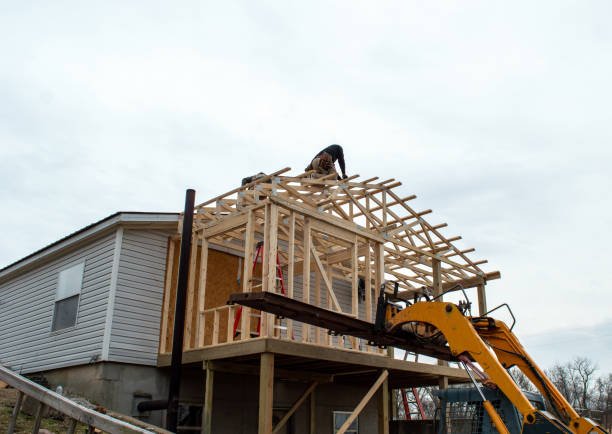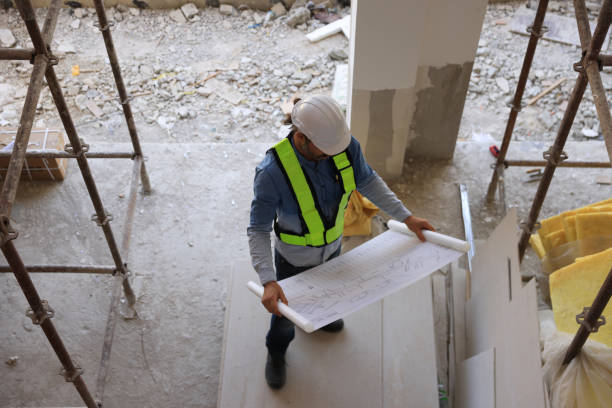
Earthquakes are a significant natural hazard in New Zealand due to its location on the Pacific Ring of Fire. To help homeowners recover from earthquake damage, New Zealand has the Earthquake Commission (EQC). The EQC provides insurance for residential property owners, covering damage caused by natural disasters such as earthquakes, landslides, volcanic eruptions, and tsunamis.
Understanding the EQC repair process is essential for homeowners, especially in a country prone to seismic activity. Whether you're a homeowner recovering from a recent event or simply preparing for the future, this guide will cover everything you need to know about EQC repairs in New Zealand.
What is the EQC?
The Earthquake Commission (EQC) is a New Zealand government agency that provides natural disaster insurance for residential property. It was created to offer affordable insurance for homeowners and to help manage the financial risk of earthquakes and other natural disasters.
The EQC insures homes, land, and personal property. It works in conjunction with private insurers to provide cover in case of damage from a natural disaster. The EQC policy comes as an automatic part of homeowners’ private insurance policies for fire, which also includes insurance for earthquake damage.
EQCover
When homeowners purchase private home insurance, they automatically receive EQC cover. This cover applies to:
- Residential buildings: EQC provides cover up to $150,000 (+ GST) for damage to homes.
- Personal belongings: EQC also covers personal items such as furniture, electronics, and appliances for up to $150,000 (+ GST).
- Land: Land immediately around the home and under it is covered, though there are specific criteria on what constitutes land damage.
What is Covered Under EQC Repairs?
EQC will only cover damages caused by natural disasters, including earthquakes, volcanic eruptions, tsunamis, and landslides. Here’s what is typically covered:
- Structural damage to the home: This includes damage to the foundations, walls, roof, and other parts of the home’s structure.
- Land damage: Damage to the land immediately around your home, such as retaining walls, is also included.
- Flooring, ceilings, and internal walls: Repairing or replacing damaged parts of the home’s interior is covered.
It’s essential to note that the EQC does not cover damages caused by gradual events such as wear and tear or poor maintenance.

The EQC Claim Process
After an earthquake or other natural disaster, homeowners must follow the EQC claim process to receive compensation for repairs. The process involves several steps, and understanding them can help avoid delays in getting your home repaired:
1. File a Claim
You must file your EQC claim within three months (90 days) of the natural disaster. The claim can be submitted online, via email, or by phone. You will need to provide details of the damage, the date it occurred, and your insurance policy information.
2. Damage Assessment
Once your claim is lodged, EQC will assess the damage to your home. A qualified assessor will visit your property to evaluate the damage and determine the cost of repairs. If necessary, additional assessments by engineers or other specialists may be required.
3. EQC Repair or Payout
Once the damage is assessed, EQC will decide whether to repair the damage directly or provide a cash settlement. There are two options for how this happens:
- Managed Repair: EQC manages the repair process and contracts builders and tradespeople to carry out the repairs on your home.
- Cash Settlement: EQC pays you a sum of money to manage the repairs yourself.
Which option is chosen depends on the extent of the damage and the homeowner's preference. However, EQC will provide guidance on the best approach.
4. Repair Process
If EQC manages the repair, they will appoint contractors and project managers to oversee the work. Homeowners will be informed of the repair schedule, and the repair work will be carried out according to EQC-approved standards.
For those receiving a cash settlement, homeowners are responsible for organising the repair process themselves. It’s important to choose qualified tradespeople and ensure the repairs meet the necessary building codes and standards.

EQC Repairs Post-Christchurch Earthquake
The Christchurch earthquakes of 2010 and 2011 highlighted the challenges of managing large-scale earthquake repairs. In the aftermath, the EQC worked to repair over 160,000 homes, and the process was not without its difficulties. Issues such as delays, disputes over repairs, and quality concerns became common.
In response to these issues, the EQC made significant changes to its processes to ensure better outcomes for future disasters. One of the key lessons from the Christchurch earthquake was the importance of homeowners understanding their rights and options throughout the repair process.
Common Issues with EQC Repairs
While the EQC plays an essential role in disaster recovery, the repair process can sometimes be complicated. Homeowners should be aware of potential issues that can arise:
- Delays: Following a major earthquake, the volume of claims can overwhelm EQC, resulting in delays in assessments, repairs, and payouts.
- Disputes: Homeowners may disagree with EQC’s assessment of the damage or the cost of repairs. In such cases, disputes can be resolved through the EQC’s internal complaints process, mediation, or legal action.
- Quality of Repairs: Some homeowners have reported poor-quality repairs carried out by EQC contractors. It’s essential to monitor the repair work and raise any concerns immediately.
- Scope of Coverage: The EQC only covers up to $150,000 (+ GST) for residential building repairs. In cases where the damage exceeds this amount, private insurance may need to cover the rest. It’s important to review your private insurance policy to ensure sufficient coverage.

Recent Changes and Developments
In 2021, the EQC underwent changes aimed at improving the claims process and homeowner experience. These included simplifying the claims process, increasing the cap on building claims from $100,000 to $150,000 (+ GST), and improving communication with claimants.
Additionally, the EQC has focused on ensuring better transparency, communication, and accountability in managing repairs, particularly in response to feedback from homeowners affected by the Christchurch and Kaikoura earthquakes.
Conclusion
Understanding the EQC repair process in New Zealand is crucial for homeowners living in earthquake-prone regions. By knowing what’s covered, how to file a claim, and how to navigate the repair process, homeowners can be better prepared to recover after a disaster. While challenges remain, particularly regarding delays and disputes, recent reforms have sought to improve the EQC system, ensuring a smoother process for future claims.
For homeowners, staying informed about your insurance policies, understanding the EQC process, and knowing your rights can make a significant difference in ensuring a successful recovery from earthquake damage.














.png)
.jpg)










